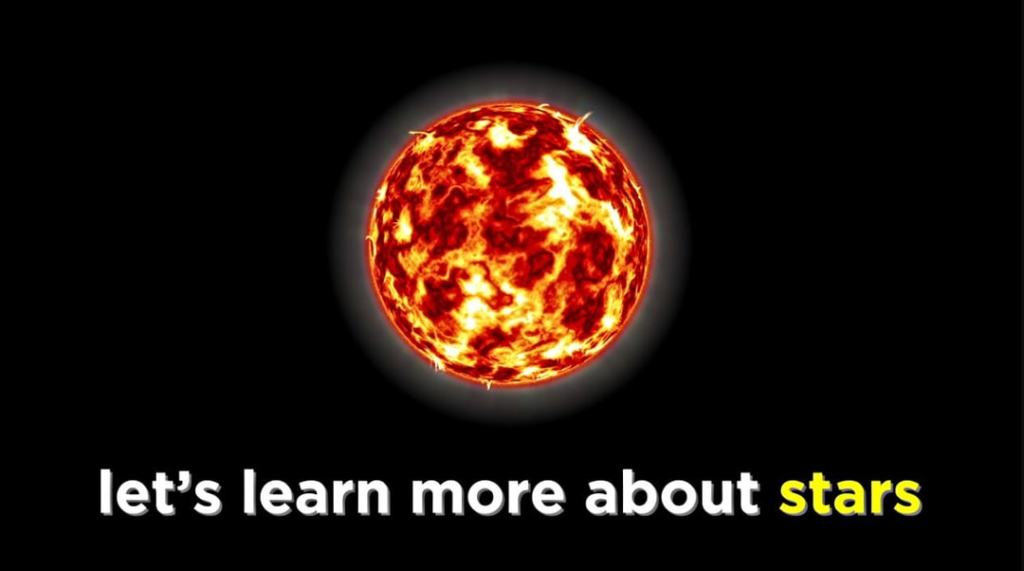Temperatures vary widely from star to star. Some stars are considered to be “cold” while other stars are hotter. It is possible to estimate the temperature of each star by its color. Astronomers calculate the color of a star using two filters, known as the b-v color index. It is calibrated based on temperature.

The color of a star is determined by subtracting from the magnitude obtained in the blue filter (B) the visual filter (V) value. Blue stars are hot, and they have smaller and negative values of b-v than the cooler red stars. For example, if a star’s magnitudes in two filters are B=16.0 and V=15.5, the star has a b-v color index of 0.5.
Next, we will see how they make this association between color and temperature of a star through Harvard Spectral Classification. It should be noted that the correspondence between color and temperature presents approximate values.
Harvard Spectral Classification
To better grasp the different temperatures of stars it should be noted that 1 Kelvin equals to -272.15 degrees Celsius. To convert Kelvin to Celsius, use the following simple formula: 1K – 273.15 = -272.15 °C (the value 273.15 is a constant).
The current classification system uses the letters O, B, A, F, G, K, and M, to sequence stars from the hottest to the coolest. Overall there are 7 spectral classes:
O Class (blue) – These are very hot stars, with surface temperatures above 30,000 Kelvin.
B Class (gradient between blue and white) – In this group, temperatures are between 30,000 Kelvin and 10,000 Kelvin.
A Class (white) – Temperatures are between 10,000 Kelvin to 7,500 Kelvin.
F Class (gradient between white and yellow) – These stars are between 7,500 Kelvin to 6,000 Kelvin.
G Class (yellow) – Temperatures between 6,000 K to 5,000 K. This class includes our Sun.
K Class (orange) – In this group of stars the temperatures are between 5,000 Kelvin and 3,500 Kelvin.
M Class (red) – The stars in this class are the coldest, with surface temperatures below 3,500 Kelvin.
To distinguish between giant stars and dwarfs, the Morgan–Keenan (MK) luminosity class is appended to the Harvard classification for the star. Luminosity values are based on the width of certain absorption lines in the star’s spectrum which vary with the density of the atmosphere.
Color and Temperature of the Stars
On a cloudless night and during the new moon phase it is possible to observe the stars more easily. We can identify two properties when looking at stars:
Luminosity: which is the brightness of a star. The amount of energy (light) it emits from its surface in a certain period of time.
Color: Stars exist in a wide range of colors. They can be red, orange, yellow, green, white and blue. As previously mentioned, red being the coolest while blue being the hottest.
It is possible to observe colors of two stars in the Orion constellation.
Two of the brightest stars have different colors:
Rigel is a blue supergiant.
Betelgeuse, a distinctly red-colored star.
The different colors of the stars Betelgeuse and Rigel indicate different star surface temperatures. Very hot stars are blue, and have surface temperatures of around 30,000 ºC. They emit most of their light energy in the form of short radiation wavelengths. On the other hand, stars like Betelgeuse, emit their light over a longer wavelength, are red with a surface temperature below 3000 ºC. Stars with surface temperatures between 3000 and 6000 °C are yellow, as our sun.
The color of the stars also allows astronomers to use it as information about other characteristics of the stars. It should be noted that when we observe the stars, we can only see the visible spectrum of their complete spectrum. In fact, stars emit radiation. The total set of radiations constitute the spectrum of the emitting body, consisting of waves of short and long wavelength. The visible radiation is only a small portion of the total spectrum of the star.
RELATED POSTS:
Stars? A Short Introduction.
What Do We Know About the Universe?
What Is a Blue Moon? Is a Blue Moon Actually Blue?
Why is the Sunset Red?
What Is the Temperature of Space?